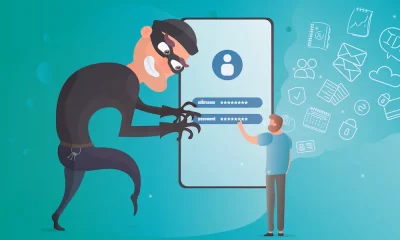Security
Corporate Cyber Security -Tips to Secure Business Data

Technological innovation has led online trade and commerce and commerce to thrive globally. As a result, numerous online consumers favor online payments using debit or credit cards for their purchases. Most businesses today accept credit card payments exposing the data to external attacks and theft. Therefore, different firms have recognized the significance of network security and network security appliances.
Ensuring high-end security of user data is a corporate company’s primary role in collecting lots of details from clients, workers, and stakeholders. However, with the growing advent of technologies, malware, and computer infections, it’s challenging for big businesses to house and manage corporate cybersecurity.
Many cybersecurity experts allege that loopholes in security policies can lead to access of your servers to malware authors and hackers who can steal your data.
1. What are network security appliances?
These applications and appliances are specifically created for securing corporate systems from all attacks.
These attacks can result from:
- Errors
- Automated bots
- Other external intrusions
These appliances mainly include:
- Encryptions
- Firewalls
- Intrusions
- Prevention systems
- Honeypots.
2. Innovative Network Security Appliances
Leading data firms, for instance, HID Global, have launched network security appliances that assist IT departments to handle change by gaining a unified view of all servers and other virtual deployments. HID Global recently announced innovative network security appliances that support in:
- Efficiently managing complexity
- Ensuring high accessibility of business services
- Ensuring ongoing operational and security compliance
Advanced network security appliances provided by top-notch service providers mainly include an auto-configuration discovery. This helps in monitoring the configuration state of infrastructure and sets up a repository that has two significant abilities:-
- Virtualization – This is a virtual set of infrastructure that is dynamically updated in real time. It provides a viewable window to the configuration state of the infrastructure.
- Ontology – Ontology is a data model of behaviors, entities, and inter-dependencies within the infrastructure
Besides, the appliances comprise perceptive web-based command and control interfaces that can take out real-time data from the repository. This permits precise corporate audits, vulnerability and compliance assessments, asset tracking, and configuration management.
3. Tips to guard your business data
Install patches – Lessen exploitable entry points
It’s crucial to download, install, and update vulnerable applications and operating systems to avoid heinous cyber attacks. Installing security updates and patches often reduces the number of exploitable entry points available, hence assistingng in building an extra security layer across saved files.
Application Whitelisting – Restrict scammers
This common cybersecurity strategy aids businesses to restrict their crucial data from scammers. Therefore, by Whitelisting an application, you can specify particular uses or programs to run whilee block all others.
Avoid Cybersecurity attacks – Restrict Administrative Privileges.
You avoid cybersecurity attacks by setting up administrative privileges on several PCs, servers, and database centers. Also, this enables you to track down the infection source. More so, using this security hint assists you in hindering malicious software from running on your device or limiting its capability to spread by using your network connection.
Track down malicious sources – Add Security layers and understand Firewalls
Adding firewalls, security applications, and other similar programs to your devices, servers, and networks is crucial. By installing the same, you add an extra layer of security to hinder cyber attacks and help track down any malicious sources to prevent losses in the future.
Therefore, including this option in your corporate cybersecurity methods can assist you in defining who accesses your network, making changes in its configuration, and even blocking data from particular locations to circumvent significant data losses.






